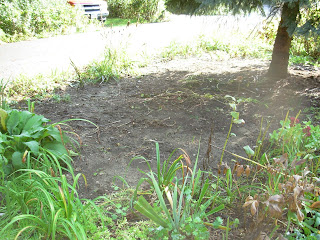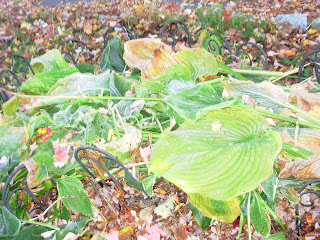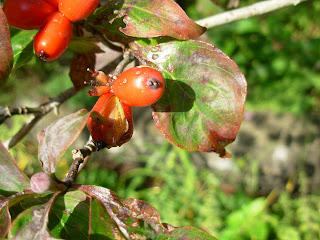
The berry on the left is not ripe yet. The one on the right, which is bulging and much darker is fully ripe.

You need to pull the berry apart and just suck in the pulp, which is a delicate blob of a very different pleasant to me taste.

It reminds me of a special nectar, and why should it be enjoyed only by the birds.

I found that not every berry had a seed, which seemed curious. Nevertheless I kept the seeds I did find, dried them out and have planted them. We shall see if and when I get my own berry toting Kousa!!

Naturally I went right out and tried the berries from my red Dogwood out front. Ugh, they were disgusting!!! Let the birds have 'em!! LOL



















































